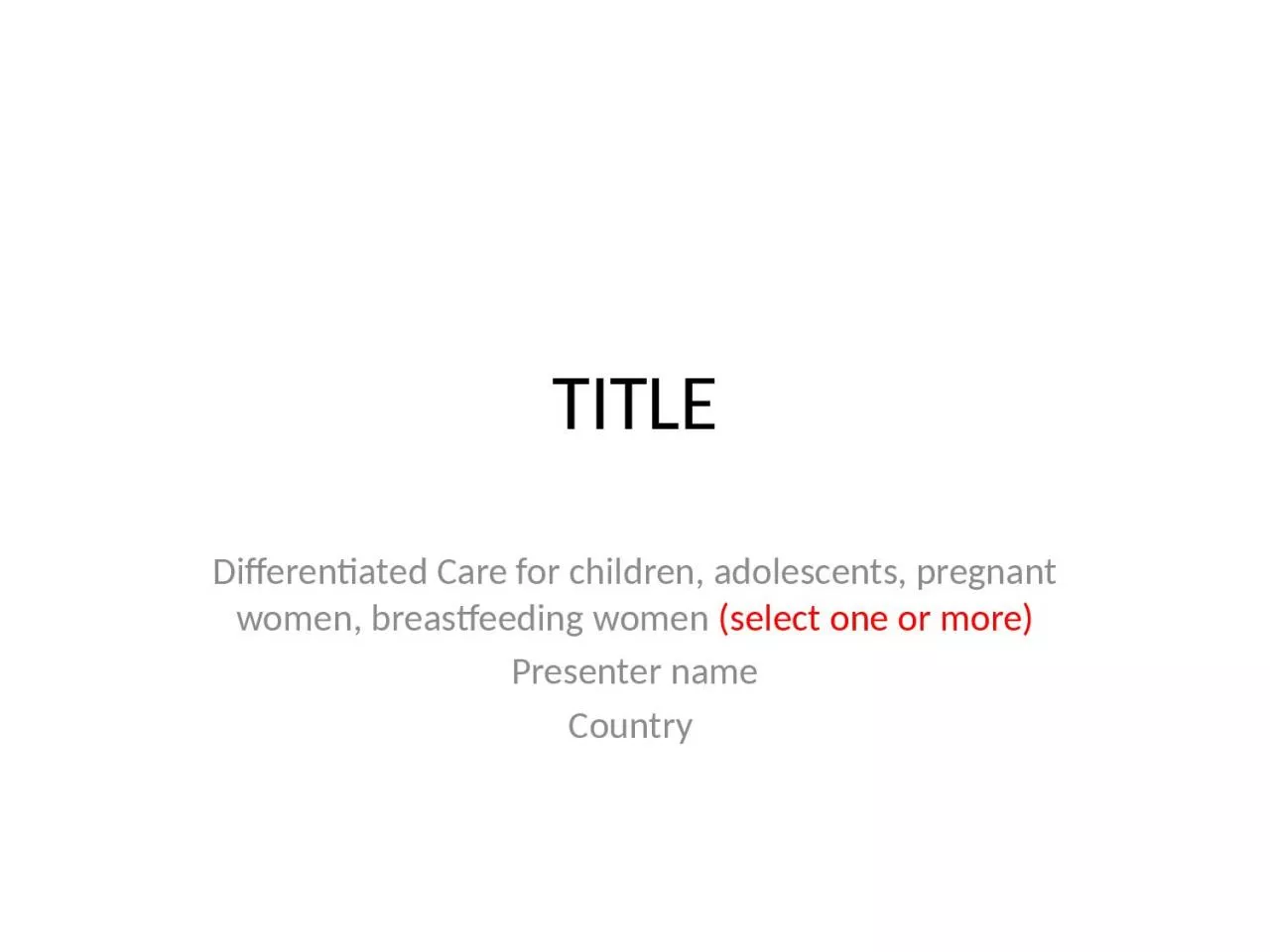

select one or more Presenter name Country ChallengesRationale PLEASE DESCRIBE THE SITUATION IN YOUR COUNTRY REGION CITY IDENTIFY CHALLENGES IN TREATING AND RETAINING SPECIFIC POPULATIONS ID: 1044047
Download Presentation The PPT/PDF document "TITLE Differentiated Care for children, ..." is the property of its rightful owner. Permission is granted to download and print the materials on this web site for personal, non-commercial use only, and to display it on your personal computer provided you do not modify the materials and that you retain all copyright notices contained in the materials. By downloading content from our website, you accept the terms of this agreement.
1. TITLEDifferentiated Care for children, adolescents, pregnant women, breastfeeding women (select one or more)Presenter nameCountry
2. Challenges/RationalePLEASE DESCRIBE THE SITUATION IN YOUR COUNTRY, REGION, CITY. IDENTIFY CHALLENGES IN TREATING AND RETAINING SPECIFIC POPULATIONSHealth system challengesReaching more peopleidentify more clients (first 90),Improve client outcomes (second and third 90s)reduce staff workloadReduce barriers to accessImprove management of sick clients, clients with comorbidities, etc.Patient challengesTravel and wait timesLack of treatment literacyStigma and discriminationImprove/expand accessSimplify careReduce wait time
3. Who was care for?Define the clinical characteristics, population and contextClinical characteristics Stable/Unstable/Co-morbid Specific populationContext Urban/rural, unstable context, epidemic type
4. An Overview of the interventionDescribe the interventionWhat kind of model?Health care worker-managed group, client-managed group, facility-based individual model or out-of-facility individual model?Type of serviceFor example government/NGO, community based or Community lead, Health facility satellite, DIC, outreach, involving/employing peersEligibilityWho is eligible to access the model? E.g. “stable” clients (how is the defined), what ages, etc.Describe the key elements of the interventionDescribe the building blocksWHEN – at what frequency are clients seenWHERE – where is care providedWHO – what cadre of staff facilitates the modelWHAT – services are providedIs ART delivery already part of the model?How are clients “up-referred” if they are no longer eligible/require more frequent/intense clinical support?
5. Implementing the interventionDescribe what it took to get this into placeWas this a pilot projectHas it been taken to scaleDid you have to train staff? What materials did you useWas there a lot of supervision requiredHow did you track progress? What M&E elements did you build into the modelDo you know how much this cost?Overall was this feasible?Is there evidence of success? (including client outcomes, client satisfaction, HCW perspectives, waiting times, etc.
6. CHALLENGES AND SUCCESSESCHALLENGESSUCCESSSES
7. LESSONS LEARNED/RECOMMENDATIONS
8. Summary of “standard of care” vs. Differentiated service delivery model*Report relevant outcomes depending on the intervention – e.g. HIV-Positive yield/% linkage to care/% initiated / % retention / % virally suppressed This is a summary table to compare existing services or the standard of care to the intervention/differentiated service delivery modelFacility based/traditional modelDifferentiated service delivery modelBUILDING BLOCKSWHENWHEREWHOWHATOUTCOMES*Training requirementsCost effectiveness of modelEvidence of success